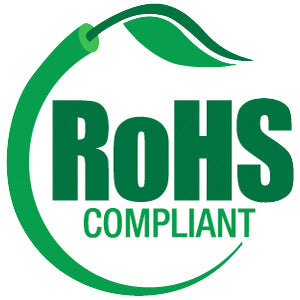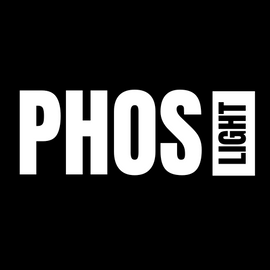= ENERGY STAR® =
ENERGY STAR is a United States government backed system for energy efficiency to provide simple and unbiased, credible information that businesses and customers can rely on to help make informed decisions.
You will see the ENERGY STAR logo mark on select Phos Light or partner products. It features a blue logo with a white star. The Environmental Protection Agency (EPA) ensures that each product to earn that logo was independently certified to deliver the quality, performance, and savings that consumers have come to expect.
Phos Light and our partnering brands include the ENERGY STAR mark on product packaging and you can see it in both the technical specifications on our website and in the downloadable Tech Spec PDFs for our products.
In addition to certifications for our products, we also provide technical specifications for each product. One of those is the lifetime hours of our LED bulbs.
= Lifetime Rating Test Method =
ENERGY STAR allows LED device manufacturers to perform our own LM-80 testing data.
Using the ENERGY STAR recommended method for testing the lifetime of a lightbulb, we employ LM-80-08 (a.k.a. LM-80), a test method authored by the Illuminating Engineering Society of North America (IESNA). This “Approved Method: Measuring Lumen Maintenance of LED Light Sources” estimates the lifetime hours of qualified SSL Luminaires. It shows the relative light output, over time at various set conditions. In other words, how quickly the light output of a component level LED will depreciate.
This test does not extrapolate the lab measured LED lifetime testing data to determine future lifetime prediction. It only presents the resulting test data in the form of a data table and chart. Predicting lifetime hours is where TM-21-11 steps in.
TM-21-11 is referred to as “Projecting Long Term Lumen Maintenance of LED Light Sources” and is a standard calculation to extrapolate test data in order to predict future performance. Just like any lightbulb, LEDs will gradually depreciate over time. Since LEDs provide you with a significantly longer lifetime and do not physically degrade in ways that traditional lightbulbs do (such as darkened glass bulbs or broken, coiled filament wires), this standard helps ensure that you see consistent reporting from LED manufacturers.
= UL Listed =
UL stands for Underwriters Laboratories, a non-profit. They are an independent global, safety science company that tests and approves products for consumer safety and standards. They have been in existence for more than a century and do not have a financial interest in the products they evaluate. That is quite a pedigree.
When something is labeled as UL Listed that means the tested product met pertinent requirements under the Underwriters Laboratories’ Standards of Safety.
Underwriters Laboratories provides various marks (like the logo shown here) that manufacturers can use to indicate a product is UL Listed.
= ETL Certification =
Electrical Testing Laboratories or ETL was begun by Thomas Edison under the title Lamp Testing Bureau in 1896 to test the safety of light bulbs. ETL now tests against Standards of Safety by using published standards from companies like UL, American Society of Mechanical Engineers (ASME), and American Society for Testing and Materials (ASTM).
Intertek ETL provides a certification mark to indicate proof of product compliance in the U.S., Canada, and in other parts of the world.
= DLC Approved =
DesignLight Consortium is a non-profit with a mission to define quality, facilitate thought leadership, and to deliver both tools and resources to the lighting market through open dialogue and collaboration. In addition, utilities nationwide participate in rebate programs regarding DLC standards for select products.
Accredited laboratories perform the testing, according to DLC LED lighting requirements to comply with performance standards in:
- Distribution
- Color
- Longevity/Stress
= FCC Certification =
The Federal Communications Commission (FCC) regulates and enforces products that can emit radio frequency energy or other electromagnetic interference that might cause harm to the public or broadcast in radio frequency range, plus other telecommunications requirements. The FCC enforces this per Title 47 of CFR Section 2.907. Certification for RF devices is the most stringent offered by the FCC due to the potential interference with radio services. Test data provided to the FCC is sourced from testing performed by an FCC recognized and accredited testing laboratory.
Phos Light, as well as our partners LED bulbs and devices with remote, Bluetooth, or WiFi functionality include FCC certification, since they are Radio Frequency (RF) devices and fall under FCC rules.
= CE Marking =
CE Marking indicates that the product may be legally placed on the EFTA & European Union (EU) market. This attests that a particular product contains the essential requirements and/or performance levels, and Harmonized Standards to which products must conform. Harmonized Standards are the technical specifications established by several European standards agencies (CEN, CENELEC, etc.).
The letters “CE” stand for the French phrase “Conformité Européene,” which is translated as European Conformity.

= What is RoHS certification? =
Most Phos Light and partner products are RoHS compliant. RoHS stands for Restriction of Hazardous Substances, also known as Directive 2002/95/EC. It originated in the European Union and restricts the use of specific hazardous materials within electrical and electronic products. All applicable products in the EU market after July 1, 2006 must pass RoHS compliance.
The restricted materials banned under RoHS include materials that were commonly found in traditional light bulbs:
- Lead (Pb)
- Mercury (Hg)
- Cadmium (Cd)
- Hexavalent Chromium (CrVI)
- Polybrominated Biphenyls (PBB), Polybrominated Diphenyl Ethers (PBDE)
- 4 types of Phthalates: DEHP, BBP, BBP, DIBP
These restricted materials are hazardous to the environment, they pollute landfills, and are dangerous in terms of occupational exposure during manufacturing and recycling.
Like the other certifications, RoHS compliant details can be found in our Technical Specifications for each product.
Each of the product certifications above certify a wide variety of the products Phos Light curates, manufacturers and distributes to you. For your convenience, you can explore the products associated with each certification from this page. We also provide a technical specification on each product page or you can review specs for each product family through the Manuals and Downloads page.






